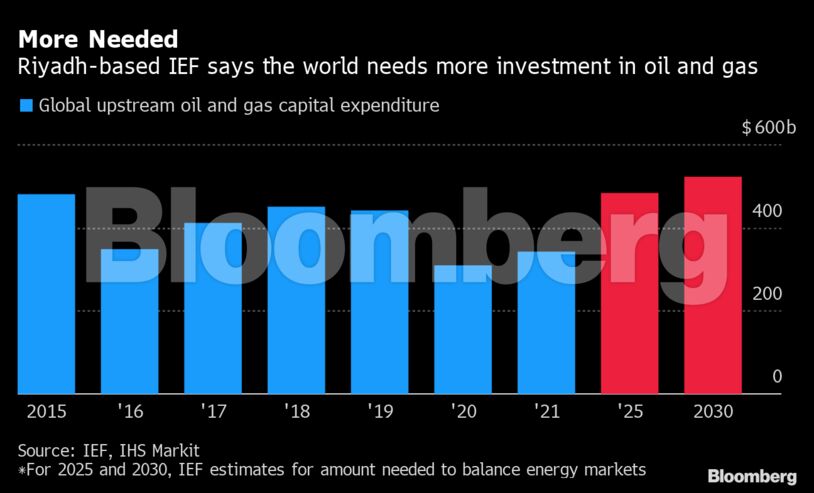The IEF said spending on oil and gas projects slumped 30% to $309 billion in 2020 and had only recovered slightly this year. It needs to reach $4.7 trillion over this decade as a whole to meet demand, according to the organization’s forecasts.
“The next two years are critical for sanctioning and allocating capital toward new projects to ensure adequate oil and gas supply comes online within the next five or six years,” the IEF said in a report. “Insufficient upstream investment would result in more price volatility and spur adverse economic consequences.”
That’s at odds with what most climate activists and some major energy bodies say is necessary to slow the warming of the planet. The International Energy Agency, which advises rich countries, has called for the cessation of new investment in fossil fuels if the world is to neutralize carbon emissions by 2050.
The Organization of Petroleum Exporting Countries and companies such as TotalEnergies SE have said it will be years, if not decades, before renewable forms of energy can fully replace oil and gas.
They have said oil’s surge this year to more than $70 a barrel could continue without more money being put toward fossil fuels.
“Publicly admitting that oil and gas will play an essential and significant role, during the transition and beyond, will be hard for some,” Aramco’s CEO, Amin Nasser, said at the World Petroleum Congress in Houston. “But admitting this reality will be far easier than dealing with energy insecurity, rampant inflation, and social unrest if prices become intolerably high.”
Share This:




 CDN NEWS |
CDN NEWS |  US NEWS
US NEWS 




























